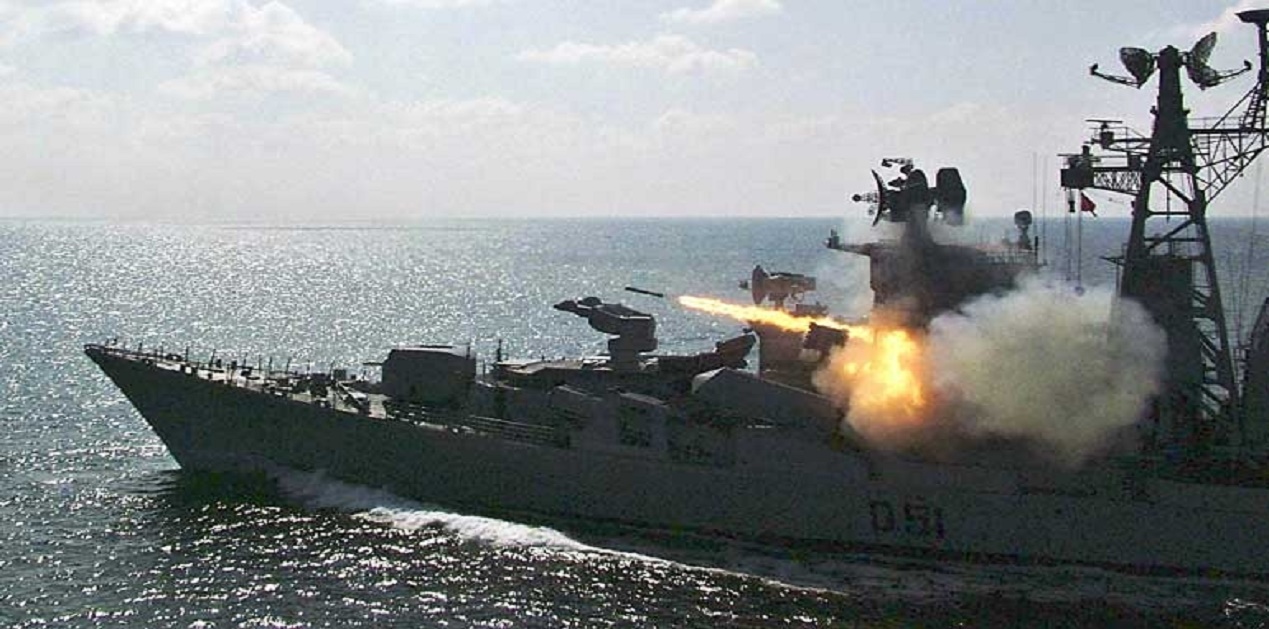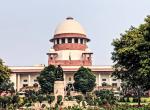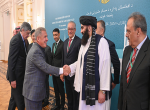Recent violent clashes near the Line of Actual Control (LAC) between Indian and Chinese army units, resulting in large number of casualties in the Galwan region, has caused significant alarm in the wider Indo-Pacific region. While the nature of the clashes has added a new dimension to the growing fragility of the environment, the Chinese approach and aggressive actions can be seen as continuation of a trend that has been evident during the last few years. In recent weeks, a renewed thrust by China on coercive strategies has been clearly discernible in South China Sea, East China Sea, Hong Kong, Taiwan, and few other countries in China’s neighborhood. In some cases, it has also tried to operationalize economic inducements or penalties, to seek compliance. Assessments on the immediate trigger for Chinese intrusions at multiple points, almost concurrently, along the LAC with India have varied, and could plausibly be a combination of some or all of them. Wherever the causal relationship may lie, anti-China sentiment in India is at its highest, in the last fifty years.
The current focus and attention in this conflict is on the land borders, and hence continental power, where hard positions taken over the years, to address and resolve the border dispute, have ensured negligible headway, despite numerous rounds of talks. It is also widely appreciated that China is now keen to keep this dispute open, to increase its options in dealing with a strategic competitor.
Over many centuries, strategists and historians have continued to highlight the importance of seas and oceans in a nation’s power and prosperity. Many strategic thinkers in history had focused almost exclusively on Sea Power. It was Julian Corbett who had stressed the hybrid nature of Land Power and Sea Power, and he was credited for ‘adding a maritime dimension to Clausewitz and a land dimension to Mahan.’ Here, it is important to mention that at the time of his writing, Air Power was yet to appear on the scene, and introduction of nuclear weapons, space assets and cyber operations could not have been foreseen.
Like India and some other countries, China has been a maritime power during some periods of its history, but has largely been, in recent times, regarded as a Continental Power. Mao Zedong’s People’s War was essentially based on popular support and guerrilla warfare. In later years, major threats were seen on land borders by China, which strengthened its continental identity. At the turn of the century, a conscious move by China towards Sea Power became evident. China has since worked proactively to create a new strategic identity for itself, of a Sea Power of the first order. This is partly because of the correlation seen by China between great power status and Sea Power. At the same time, it has continued to focus on land borders, thereby attempting to rise as a hybrid Sea and Continental Power. This hybridization was also evident in the framework and ongoing execution of the Belt and Road Initiative (BRI), though maritime commerce has been its mainstay.
The new dominant policy orientation of China, of turning towards the sea, has been accompanied by an assertive and aggressive approach, with scant regard to international law, established norms, and cooperative mechanisms. This has been accompanied by a rapid buildup of its naval assets of ships, submarines, and aircrafts. Policy pronouncements and actions at sea have raised concerns about the Chinese approach and intent, with periodic spike in tensions, and apprehensions about situation spilling over into a larger conflict. China has progressively moved to adopt a strategy of compellence which is active in nature, compared to the strategy of deterrence. This Chinese approach has been a subject of intense debate, particularly since Indo-Pacific is now well recognized as a coherent strategic space, driven primarily by the fact that it has been the growth underbelly of the world for well over a decade, and is expected to remain so, notwithstanding the disruptions caused by COVID-19. The region has also become the new arena for geo-political and geo-economic contestation.
Security architectures and frameworks within the Indian Ocean Region (IOR), implying institutions, and mechanisms for cooperation, are more evolved in the Eastern IOR compared to Western IOR. Despite this, threats, and challenges in Eastern IOR have increased, with higher probability of occurrence, primarily due to the Chinese posture and actions. Consequently, a new form of mini multilateralism has evolved in the region, based on shared values and common interests. This includes quadrilateral, and trilateral arrangements, which have been viewed as ‘hostile’, by China. China has also been opposing the Indo-Pacific construct, highlighting that the BRI framework is more inclusive (and thus more multilateral) and more beneficial to all participants. In the South China Sea, from 1992 when China published its own Law on the Territorial Sea and Contiguous Zone, it has made creeping incrementalism a strategy of choice, with reclamations, construction work and new military facilities, and new administrative zones.
The military facilities have included harbours, airfields, surveillance and communication equipment, and logistic support assets. Undergirding this progress has been the guiding thought that ‘occupation is de facto ownership.’ While it has improved its working relations with ASEAN, the Code of Conduct (CoC) under discussion between the two sides for over fifteen years has been elusive. In 2018, a Single Draft Negotiating Text (SDNT) was agreed upon, and details were kept classified. The schedule released indicated that consultations are to be completed by 2021. As per leaked reports, China is keen to bind ASEAN members, and exclude/limit the involvement of third parties. China’s relationship with Japan and Australia has also caused anxieties at different periods. There have also been several incidents involving the PLA Navy or Chinese Coast guard, where ships or assets of countries of the region have been targeted by China in an aggressive, and sometimes hostile, manner.
In the IOR, and in areas of primary maritime interest to India, the PLA Navy started regular deployments in 2008, with Escort Groups designated for anti-piracy patrols. Soon thereafter, submarines and depot ships were included as part of the deployments. This was followed by deployment of oceanographic research vessels, seabed mining assets and intelligence gathering units to the region. It has since undertaken several long-range and long-duration deployments in South Pacific, Indian Ocean, the Mediterranean, and Eastern Atlantic regions, positioning itself as a force with reach and sustainability. This has included deployment of nuclear submarines in the IOR, since 2013. It has focused on building up operational experience, particularly in carrier operations, submarine patrols, and expeditionary operations; with attempts to integrate space-based inputs and intelligence.
While in the Western Pacific, China’s primary focus has been to rapidly narrow the gap with the US Navy (with specific strategies to deter and threaten), in the Indian Ocean its posture has been to influence the strategic environment and convey its intent to protect some of China’s critical interests. Maritime infrastructure projects in different countries, including Pakistan, Sri Lanka, Bangladesh, Myanmar, Thailand, Kenya etc., are in different stages of implementation as part of BRI, to ensure smooth flow of Chinese trade, strengthen energy security, protect significant investments, and gain legitimacy to operate and maintain naval forces. Periodically, it has also attempted to bring down India’s position as a pre-eminent maritime power in the region, through political moves in coastal and island neighbours of India, as seen in Seychelles, Maldives, and Sri Lanka, at different periods of time.
Though the growth of the Indian Navy in the last two decades has been slower and limited, in comparison to PLA Navy, the operational and deployment philosophies have undergone major transition. Increased focus on near-continuous surveillance in different maritime zones (including Sea Lines of Communication), and persistent Maritime Domain Awareness of high order have enabled tracking of ships of interest and boosting strike capability. Here it is important to note that unlike the PLA Navy, the Indian Navy has gradually gained widespread recognition for its mature outlook, and commitment to strengthen security and stability in the Indo-Pacific. The Indian Navy has established sound Navy to Navy cooperation, and a very large number of regional and extra-regional navies seek to expand their cooperation with the Indian Navy. Further, the Indian Navy is now seen by most countries of the Indian Ocean Region, including island nations, as strengthening Maritime Security, particularly in the critical Sea Lines of Communication. Several Logistic Support Agreements have been signed with friendly countries, enabling coverage of wider areas for longer durations, during operational deployments. India and the Indian Navy have made consistent efforts for Peace and Stability in the Indian Ocean, for Free and Open Indo-Pacific (a concept that includes adherence to rule of law and norms, and trade and economic activity free from coercion) and for improving ocean governance through mutual trust and cooperation.
History of naval operations has shown that countries with the ability to provide security to sea lanes, at extended ranges, usually possess the capability to disrupt them, if necessitated by circumstances. It must also be recognized that maritime operations, in a theatre of choice, can be progressed for escalation management in another theatre. The vulnerabilities of countries with extended lines of operations at sea can be suitably leveraged by a professional navy. Expertise built up by such navies through wargaming and exercises, for a range of scenarios, can be of significant use when any of the scenarios, or a combination thereof, begins to play out.
Post the Galwan incident; Indian Armed Forces have been put on high alert, by the Government. In the past, the Indian Navy has been in a state of high alert on many occasions, most of which were due to Pakistani actions and provocations through acts of state-sponsored terrorism. It is for the first time since independence that the Indian Navy is in readiness due to aggressive action by the PLA, along the LAC. This is certain to add a new dimension to threats and challenges at sea, and maritime security in the Indian Ocean. The consequences can have much wider ramifications, beyond just the tactical level, with major tangible and intangible setbacks. A change in the Chinese approach is central to ensuring continued security and stability at sea, and any further escalation would hurt the interests of the perpetrator, as much as it would do to the others.
(The author is former Commander-in- Chief of Western Naval Command, and Southern Naval Command, Indian Navy)
(The paper is the author’s individual scholastic articulation. The author certifies that the article/paper is original in content, unpublished and it has not been submitted for publication/web upload elsewhere, and that the facts and figures quoted are duly referenced, as needed, and are believed to be correct). (The paper does not necessarily represent the organisational stance... More >>
Image Source: https://moderndiplomacy.eu/wp-content/uploads/2017/11/5bc809922b62b92fb0594be109b18fc9.jpg










Post new comment